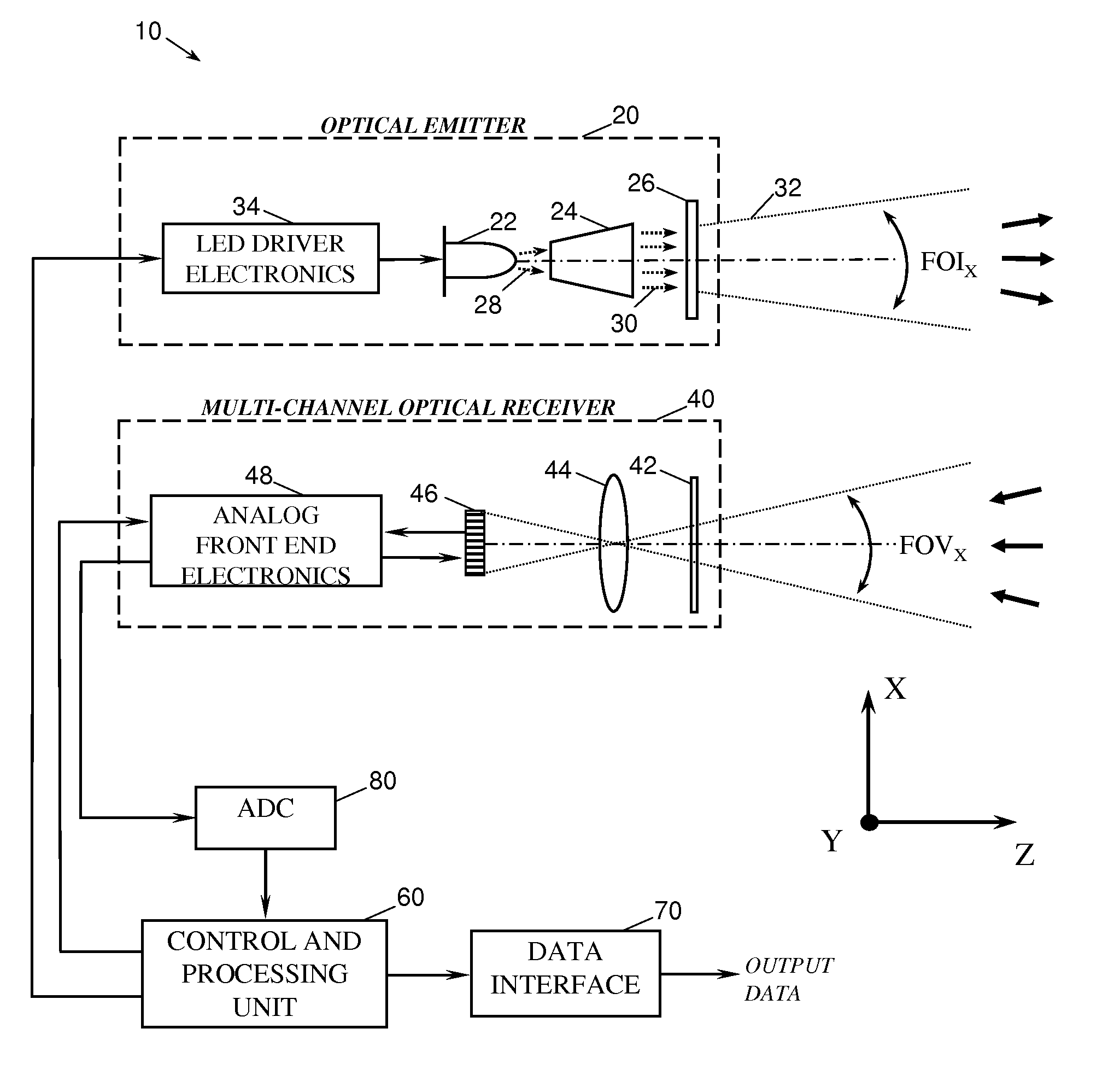Multiple-field-of-view scannerless optical rangefinder in high ambient background light
a scannerless, background light technology, applied in the field of scannerless instruments, can solve the problems of limiting the fov of the optical receiver, unable to meet the latter requirement directly, and unable to fully benefit from the advantages of apds in rangefinder instruments intended for outdoor use in daytime conditions
- Summary
- Abstract
- Description
- Claims
- Application Information
AI Technical Summary
Problems solved by technology
Method used
Image
Examples
Embodiment Construction
[0047]Reference will now be made in detail to the example embodiments of the invention. This invention may, however, be embodied in many different forms and should not be construed as limited to the embodiments set forth in the following description.
Overview of the Optical Rangefinder Configuration
[0048]The general layout and key components / subsystems of a multiple-FOV scannerless optical rangefinder 10 according to an example embodiment of the present invention can be better appreciated by referring to the schematic diagram of FIG. 1. The optical rangefinder 10, which operates according to the pulsed TOF principle, comprises an optical emitter 20 that emits trains of optical pulses having predetermined temporal and spatial characteristics. It also includes a multi-channel optical receiver (shortened as MCOR) 40 for detection of the optical return signals and their subsequent conversion into electrical waveforms. Each detection channel of the MCOR 40 outputs return signal waveforms ...
PUM
 Login to View More
Login to View More Abstract
Description
Claims
Application Information
 Login to View More
Login to View More - R&D
- Intellectual Property
- Life Sciences
- Materials
- Tech Scout
- Unparalleled Data Quality
- Higher Quality Content
- 60% Fewer Hallucinations
Browse by: Latest US Patents, China's latest patents, Technical Efficacy Thesaurus, Application Domain, Technology Topic, Popular Technical Reports.
© 2025 PatSnap. All rights reserved.Legal|Privacy policy|Modern Slavery Act Transparency Statement|Sitemap|About US| Contact US: help@patsnap.com



